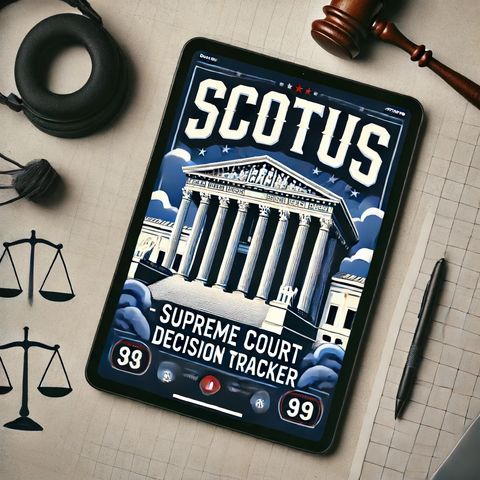Supreme Court Rulings Reshape Labor, Self-Defense, and Reproductive Rights Landscape

Download and listen anywhere
Download your favorite episodes and enjoy them, wherever you are! Sign up or log in now to access offline listening.
Supreme Court Rulings Reshape Labor, Self-Defense, and Reproductive Rights Landscape
This is an automatically generated transcript. Please note that complete accuracy is not guaranteed.
Description
The Supreme Court's rulings this past term have sparked intense discussions and possible long-term consequences, affecting everything from labor relations to individual rights in self-defense scenarios and reproductive rights. In...
show moreIn a significant ruling that impacts federal regulatory power, the Supreme Court curtailed the legal protections typically afforded by federal agencies, as seen in their decision regarding Starbucks and the National Labor Relations Board (NLRB). This decision underlines a continuing trend where the Court appears skeptical of the expansive reach of federal regulatory authority, which could influence how agencies enforce laws relating to labor, environment, and consumer protections.
Another notable decision came from the Minnesota Supreme Court, which set a precedent in self-defense cases. The ruling made it clear that individuals cannot brandish a deadly weapon in self-defense if there is a reasonable opportunity to retreat. This decision raises questions about the boundaries of self-defense and could influence future cases where the right to self-defense is claimed under urgent circumstances.
Additionally, the divisive case of United States v. Idaho regarding abortion care showed the complexities and polarized views surrounding reproductive rights. The case, which was ultimately sent back to the district court, highlights ongoing legal and ethical debates following changes in national abortion laws. This back-and-forth reflects the contentious and often unpredictable landscape of abortion rights in America post the overturning of Roe v. Wade.
These decisions from different courts illustrate an evolving judicial landscape where definitions of rights and regulatory reach are actively being contested and redefined. The outcomes not only shape the immediate legal framework but also set the stage for future debates and litigation on what role the judiciary should play in governance and societal norms. As these legal interpretations continue to unfold, they will undoubtedly influence public policy and individual rights across various sectors.
Information
| Author | QP-4 |
| Organization | William Corbin |
| Website | - |
| Tags |
Copyright 2024 - Spreaker Inc. an iHeartMedia Company

Comments